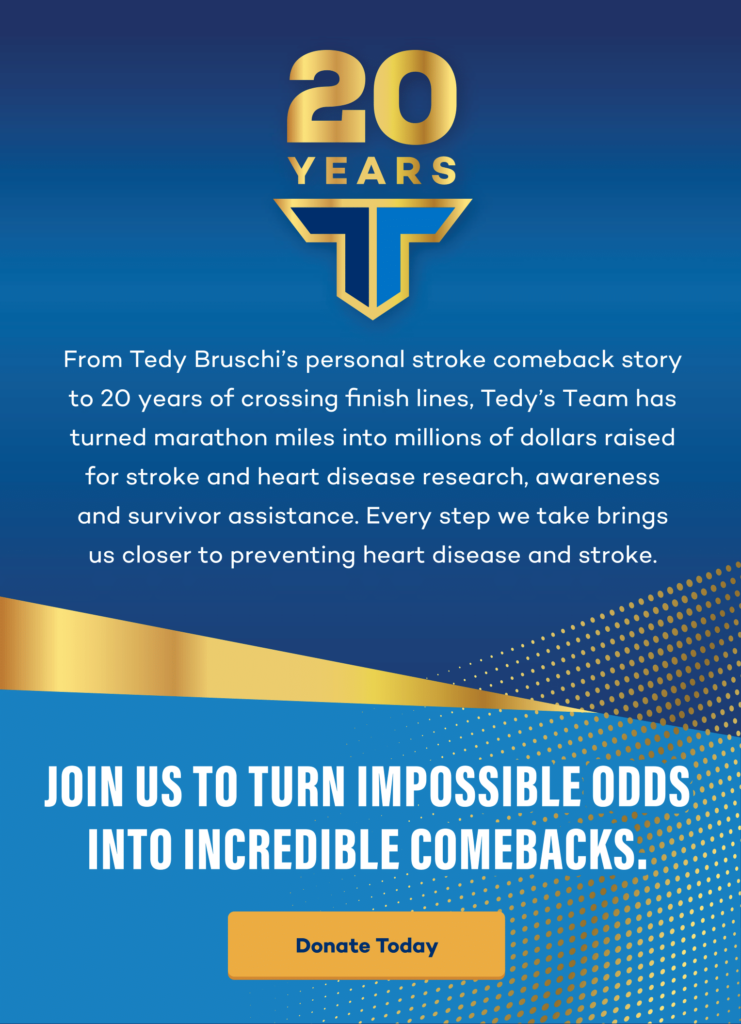Heart survivor shines light on women’s heart health, ‘ladies, you are worth it.’
Survivor Story
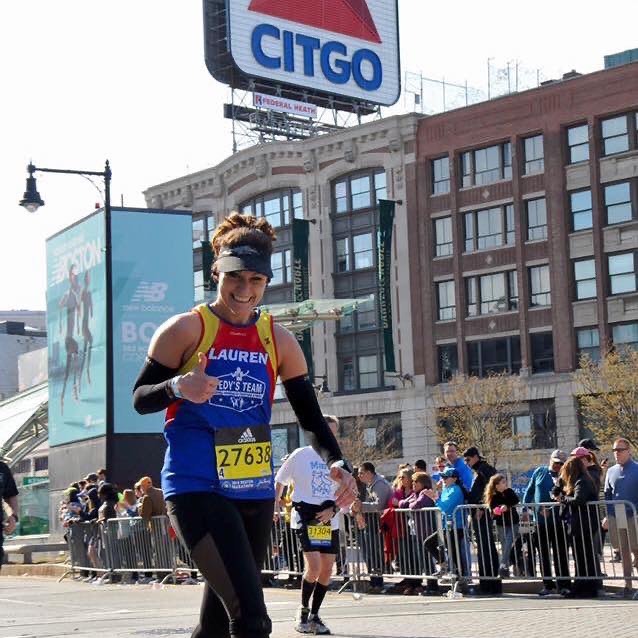
Lauren on the Boston Marathon course during the 2016 race.
Alumni runner and heart survivor, Lauren Pino, is taking over our blog this week to shine a light on women's heart health during American Heart Month.
Usually when someone tells you that, “you have a big heart,” they are complimenting your empathetic and compassionate spirit; however, when a cardiologist tells you this, while you are lying on an examination table in a hospital gown, staring at an echocardiogram screen… the phrase takes on a very different meaning.
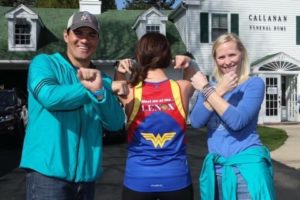
When I was 24 years old, I was diagnosed with an enlarged heart due to an undiagnosed and untreated congenital heart defect, called a patent ductus arteriosus (PDA). PDA is a persistent opening between two major blood vessels leading from the heart. This opening is a normal part of the fetal circulation system that usually closes shortly after birth, but for me, it did not. If left untreated, a PDA allows poorly oxygenated blood to flow in the wrong direction in the body, causing the left side of the heart to enlarge, which greatly increases the risk for stroke. Due to the PDA, I was essentially a ticking time bomb that could go off at any moment.
You may be wondering, “how can a congenital heart defect go undiagnosed?” Unfortunately, it is more common than you think. Since I was a young, active child with “only” a heart murmur, it was overlooked as benign. I didn’t experience crushing chest pain. No weakness in my left side. I wasn’t experiencing any of the typical heart symptoms that are associated with heart disease, so my parents didn’t question the diagnosis and trusted the physician’s judgement, just as many parents would.
It wasn’t until high school, when I began playing endurance sports, that I noticed I couldn’t keep up with my teammates, no matter how hard I tried. I would find myself huffing and puffing on the sidelines and vomiting because of overexertion.
I don’t think I need to tell you how attractive that was… especially when the football players would run by. It was not a good look for a teenage girl.
I didn’t speak up because I thought, “out of breath” just meant “out of shape,” so I pushed myself harder on the field and joined a gym to increase my strength. I improved my eating habits, and in doing so, lost over 50 pounds. I had done everything right, but I still couldn’t keep up.
It was then that I was diagnosed with exercise induced asthma and prescribed an inhaler to use before playing sports. As I’m sure you can guess, the inhaler didn’t do much good.
Even though I was discouraged, I was determined, so I continued to push myself on the field, and in the gym, all the while the left side of my heart was continuing to grow larger, and my risk of stroke was increasing.
It wasn’t until 2006, during my yearly physical with a new physician, that my diagnosis was ever questioned. It was a routine exam until she pressed her stethoscope to my chest and listened to my heart for the first time. As she was listening, I remember rambling on about my wedding and honeymoon plans the following month to fill the silence. I will never forget how her friendly smile slowly faded, and her relaxed composure became more rigid, as she moved the diaphragm around my chest, placed her hand on my shoulder, and whispered, “sshhh.”
When she finished listening to my heart, she looked at me with a puzzled expression and asked if I knew that I had a heart murmur. I replied, “yes, but it’s fine. I’ve had it since I was born and it’s benign.” She reassured me that everything was probably fine, but ordered an EKG test, “just to be on the safe side.”
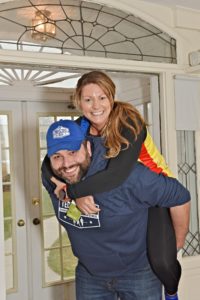
Maybe it was the worried look on her face, or maybe it was the way she quickly opened her laptop and typed up the order… but, from that moment on, a part of me knew that this young doctor knew something that I didn’t and because of that, had just saved my life.
And just like that, cake tastings and wedding dress fittings were replaced with echocardiograms, Holter monitors and stress tests.Exactly one month before my wedding, I underwent a transcatheter occlusion procedure that closed the hole in
my heart. Then, on June 25th, I was able to walk down the aisle and give my heart to the love of my life, just as planned.
Fifteen years, two children, four Boston Marathons, and countless echocardiograms and red dresses later, I am still being told I have a “big heart,” but now it’s because I have dedicated my personal and professional life towards educating and advocating for women’s heart disease prevention as a Registered Nurse Health Coach, runner for Tedy’s Team, and spokeswoman for the Go Red for Women campaign with the American Heart Association.
I joined Tedy’s Team in 2015, to run as a proud heart survivor with a team that is made up of heart and stroke survivors, and those running to honor loved ones. I have since ran 4 Boston Marathons, countless other road races, and cheered my husband, Anthony, on as he ran the 2017 Boston Marathon with Tedy’s Team in my honor.
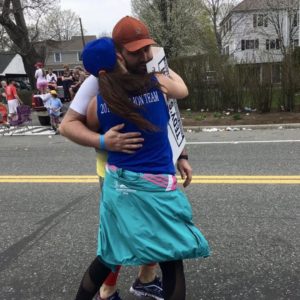
Although training for the Boston Marathon in the treacherous New England weather, while balancing working mom life is challenging to say the least, I would do it all over again in a heartbeat. Why? Simply because I can. There was a time in my life when I couldn’t run and there may be a time in the future when I can no longer run, but now is not that time. I will continue to “run with heart” and tell my story to shine a well-deserved light on women’s heart health.
My heart still isn’t perfect, but I love it nonetheless. This heart month, I encourage you to show your heart some love by knowing your numbers and understanding the factors that increase your risk for heart disease and stroke.
Ladies, you are worth it.
**Learn more about American Heart Month**
Back to All Blog Posts